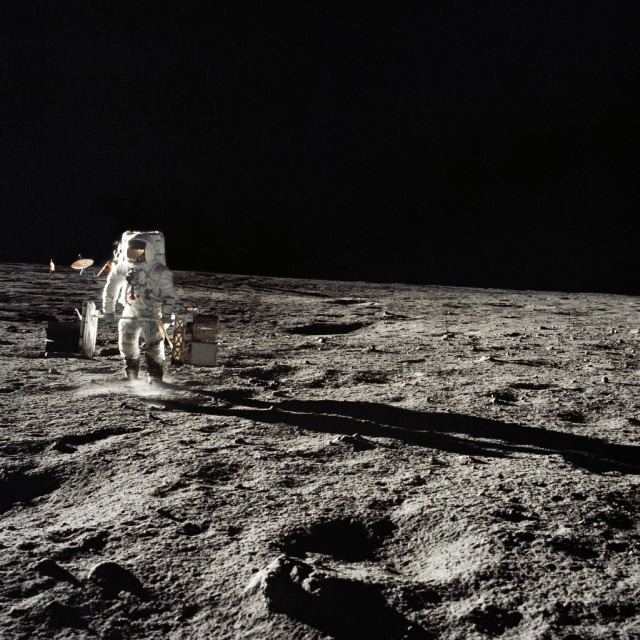
Fifty years ago, this month, America triumphantly completed the second voyage with humans to the surface of the Moon. As outlined in last weekend’s AmericaSpace history article, the Apollo 12 crew of Commander Charles “Pete” Conrad, Command Module Pilot (CMP) Dick Gordon and Lunar Module Pilot (LMP) Al Bean enjoyed a far-from-nominal ascent to low-Earth orbit on 14 November 1969; watched by President Richard M. Nixon, their rapidly climbing Saturn V booster was twice struck by lightning, necessitating quick reactions from the crew and remarkable skill and heroism from Mission Control. At length, a potentially disastrous situation with the electrical system aboard Command and Service Module (CSM) Yankee Clipper stabilized and the second landing mission to the Moon was underway.
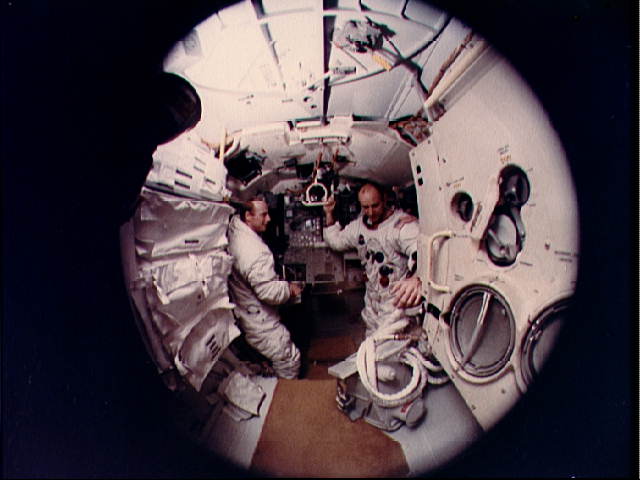
Halfway through their second orbit of the Earth, the crew fired the Saturn V’s S-IVB third stage for the Translunar Injection (TLI) to set them on a three-day course for the Moon. Shortly thereafter, Gordon detached Yankee Clipper from the booster, performed an about-turn and extracted Lunar Module (LM) Intrepid. Early on 18 November, Apollo 12 entered lunar orbit and Gordon offered his crewmates some advice for the landing ahead. “Let’s go over this again, Pete,” he told his commander. “The gas is on the right; the brake is on the left!” Yankee Clipper and Intrepid parted company at 11:16 p.m. EST and began a sweeping, 2.5-hour curve to descend towards the Ocean of Storms, some 800 miles (1,300 km) west of Armstrong and Aldrin’s landing site in the Sea of Tranquility.
Photographs from NASA’s Lunar Orbiter missions had given a pretty good topographical perspective of the target location, which resembled a snowman, with craters the astronauts had labelled Head, Left Foot, Right Foot and others. Conrad aimed for a relatively smooth spot near the 650-foot-wide (200-meter) Surveyor Crater, which he nicknamed “Pete’s Parking Lot”. He hoped that it would allow Bean and himself to walk without much difficulty over to the crater and Surveyor 3. But until Intrepid pitched over and he could actually see the surface with his own eyes, he remained sceptical at the trajectory planners’ numbers. That scepticism ended when the lunar module’s computer flipped them over from flying on their backs to flying almost vertically…and there was the snowman, laid out beneath them. “I think I see my crater…I’m not sure,” yelled Conrad, tentatively. Then, after a few seconds, he was sure. “There it is! Son-of-a-gun, right down the middle of the road!”
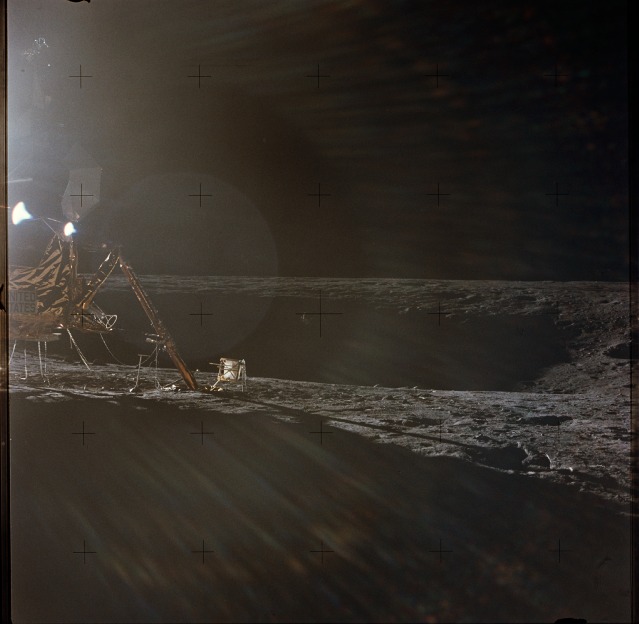
At 1:54 a.m. EST on 19 November, Intrepid’s footpads found alien soil and the second pair of human explorers were on the Moon. But having landed just past Surveyor Crater—and with no window in the “back” of the lunar module—Conrad and Bean could not be certain how close they were to Surveyor Crater. It was Gordon, flying overhead, peering through Yankee Clipper’s sextant, who determined that they had landed only 530 feet (160 meters) from Surveyor 3 itself.
The two pumped-up Moonwalkers-to-be were ready to explore, but were momentarily astonished when CapCom Ed Gibson advised them to “stand by” before opening the lunar module’s hatch. “Stand by?” retorted Conrad. “You guys ought to be spring-loaded!” Shortly thereafter, the go-ahead was given and at 6:44 a.m. EST Conrad became the third human to set foot on the Moon. And he spoke his light-hearted words to secure his bet with Oriana Fallaci. Sadly for Conrad, she never paid up.

Joined in short order by Bean, the two men spent a few minutes acclimatising themselves to one-sixth lunar gravity, walking in a stiff-legged lope, running straight-legged, landing flat-footed, pushing off with their toes. Before long, their white space suits were black from the knees down with lunar dust. Even simple tasks were very different from their pre-flight simulations. Shoveling soil into a bag required them to hold the shovel differently, stopping before they would ordinarily stop on Earth and tilting it to dump the load more steeply, because the entire sample would slide off suddenly in the weak gravity. Then as Bean attempted to set up a color television camera, he inadvertently aimed it too close to the unfiltered Sun, burning out the light-sensitive coating on its vidicon tube. Perplexed, he tried tapping the camera with his hammer, but the camera was dead.
The astronauts set up the U.S. flag and unveiled a commemorative plaque on Intrepid’s leg, then set to work collecting samples, taking photographs and setting up the ALSEP. They were aided in these tasks by small checklists on their space suit cuffs, which had received a number of additions, courtesy of backup crewmen Scott and Irwin. “Part of my job,” wrote Scott in his memoir, Two Sides of the Moon, “was to keep some levity in the game, keep things light and loose, relieve the tension where I could.” So he got a cartoonist to draw some sketches to stick in Conrad and Bean’s cuff checklists and flight plans. Scott and Irwin also added some cut-out pictures of girls from Playboy. Each image was accompanied by a suitably lewd comment, loosely connected to lunar geology. “Don’t forget the protuberances” was one example, whilst “Seen any hills or valleys?” was another. But for Mission Control and a listening public—oblivious to the prank—there was confusion when Conrad would start cackling out loud every so often, for no apparent reason…
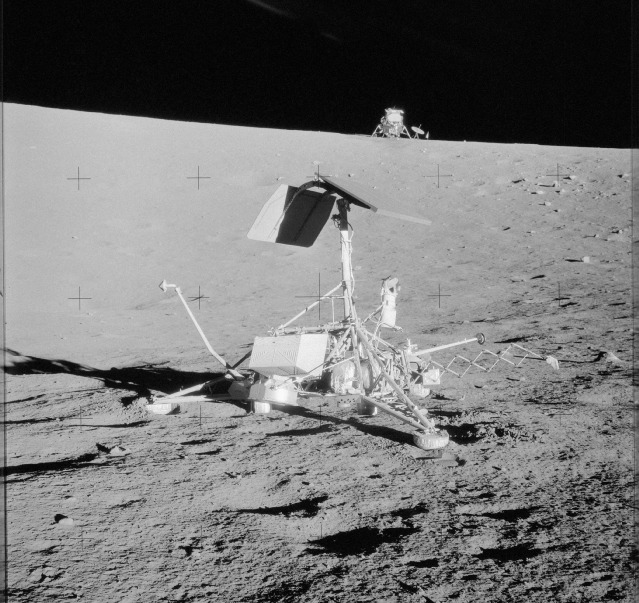
The ALSEP was a complex station, plutonium-powered, which was designed to provide in-situ measurements of the landing site. Its instrumentation included a seismometer to record subsurface quakes and tremors, a suprathermal ion detector to characterise the low-energy positive ions of a near-surface ionosphere, a solar-wind spectrometer to study the electrons and protons emanating from the Sun and their impact on the Moon, a magnetometer and a lunar dust detector. For almost eight years, until it was shut down in September 1977, Apollo 12’s ALSEP returned a wealth of scientific data. This included more than 55 minutes’-worth of bell-like oscillations, recorded when Intrepid’s ascent stage was purposely crashed into the Moon at the end of its mission.
Conrad and Bean’s first Moonwalk ended after almost four hours, measured precisely from the depressurisation to repressurisation of the lunar module’s cabin. Back inside, they stowed samples and recharged their suits’ backpacks with oxygen and water for the second excursion the following day. They slept very uncomfortably in their suits, which Conrad sarcastically remarked was about as comfortable as sleeping in football pads. In the book Rocketman, the biography of her late husband, Nancy Conrad remarked that they could hardly make out stars in the black lunar sky, thanks to the harsh sunlight which bleached the surface. “It was all so cold,” she wrote, “and as silent as silent got.”
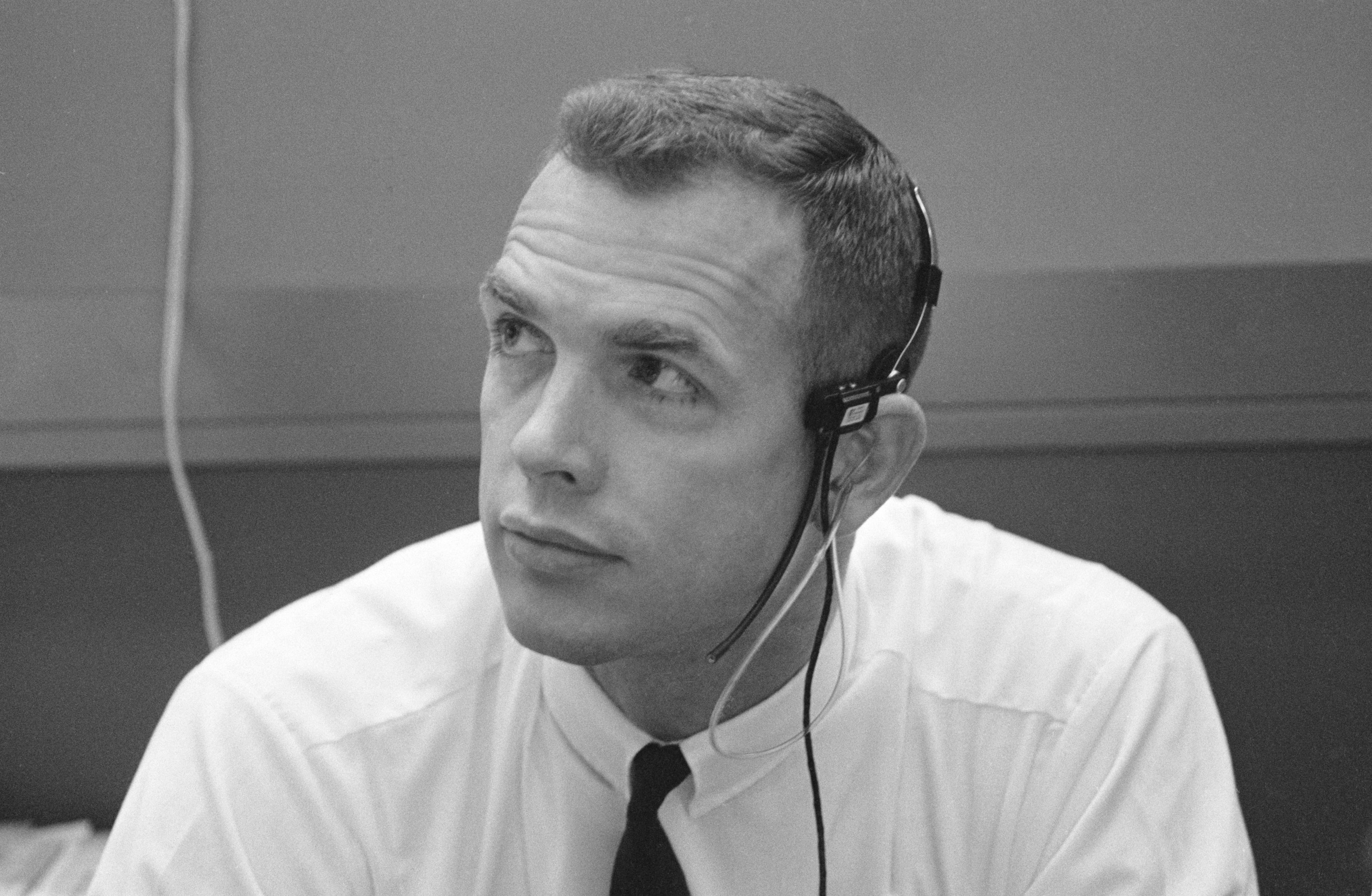
Even resting in beta-cloth hammocks made little difference and a misadjusted right leg of Conrad’s suit made it too short and was causing him severe discomfort. He woke Bean and they undid and retied cords around the suit leg, ready for the second Moonwalk. To be fair, Bean had slept badly in the clammy cabin, despite taking a sleeping pill, and the astronauts were fully awake two hours earlier than intended, already preparing to go outside again. They were back on the surface by 11 p.m. EST on 19 November.
They checked the ALSEP’s health, then trudged to several craters, collecting, documenting and photographing rocks and soil, digging trenches, taking core samples and describing the strange colours and textures of the surface: grey in some places, brown in others, depending upon the angle of the Sun. After two hours, they approached the southern rim of Surveyor Crater and saw Surveyor 3 itself, sitting on a 12-degree slope, about 150 feet (45 meters) inside the enormous bowl-like pit. Discolored by 30 months of exposure to solar radiation, it appeared in otherwise good condition, as the astronauts descended into the crater. Bean photographed the spacecraft, whilst Conrad plucked off a piece of insulated cable, then a television camera and finally Surveyor 3’s mechanized scoop to return to Earth.
Returning to Intrepid, the time came for some banter. Conrad’s effort to smuggle a baseball cap aboard may have failed, but he did manage to sneak a little chrome Hasselblad timer into one of his space suit pockets. His plan was to get a photograph of himself and Bean standing in front of Surveyor 3 and puzzle their Earthbound audience with the question: Who took the picture? Unfortunately, the timer got stuck in the bottom of their tool carrier, which gradually filled up with rocks and soil. Bean rummaged for all a while, but the glint of chrome was nowhere to be seen. Disappointed, they gave up on their unique photo opportunity. But after returning to Intrepid, as he emptied to tool carrier, Conrad found the timer. He gave it to an exasperated Bean, who tossed it into the distance.
Intrepid’s ascent stage lifted off from the Moon at 9:25 a.m. EST on 20 November, after spending 31 hours on the surface. During the return journey to Yankee Clipper, Conrad gave up his commander’s prerogative to fly and handed control over to Bean for a few minutes. It was a touching moment, which occurred on the far side of the Moon. “Al would never forget the simplest, most natural gesture Pete offered,” wrote his widow Nancy, “the only time it happened in the Apollo programme: the commander let the rookie fly.”
But after docking with Yankee Clipper and opening the hatches to see a grinning Gordon, the Moonwalkers were in for a shock. He took one look at their filthy suits and refused to let them come aboard.
“You’re not coming in my ship like that, Pete. Strip down.”
“Say what?”
“You heard me. Get out of those suits and you can come in.”
Gordon was not being awkward; he was acutely aware that the abrasive lunar dust could damage the systems of the spacecraft which would keep them alive for the three-day return to Earth, potentially clogging filters and hampering air flow. So it was that Conrad and Bean—naked as the day they were born—crossed from one ship to another, high above the Moon. And Conrad could not help but wonder: if something bad happened, at that precise moment, and a thousand years later someone found them, what would they think?
“That I’m a sick and lonely man,” Gordon deadpanned, “and I went to a lot of trouble and expense for some privacy!”
Hatches were closed and Intrepid’s ascent stage was cast adrift to crash into the lunar surface and provide some interesting data-spikes for the ALSEP. Four days later, on 24 November 1969, Yankee Clipper splashed down in the waters of the Pacific Ocean. With the safe return of Conrad, Gordon and Bean, the seemingly effortless campaign to put men on the Moon was beginning to bore a fickle public. By January 1970, there were mutterings that up to three Apollo lunar landings might face the axe of cancelation and in April of that same year Apollo 13 had to compete with regular television programmes when its crew launched on another ‘regular’ trip to the Moon. With that mission, however, no one would be left in any doubt that space exploration would always be a harsh and unforgiving mistress.
.
.
FOLLOW AmericaSpace on Facebook and Twitter!
.
.




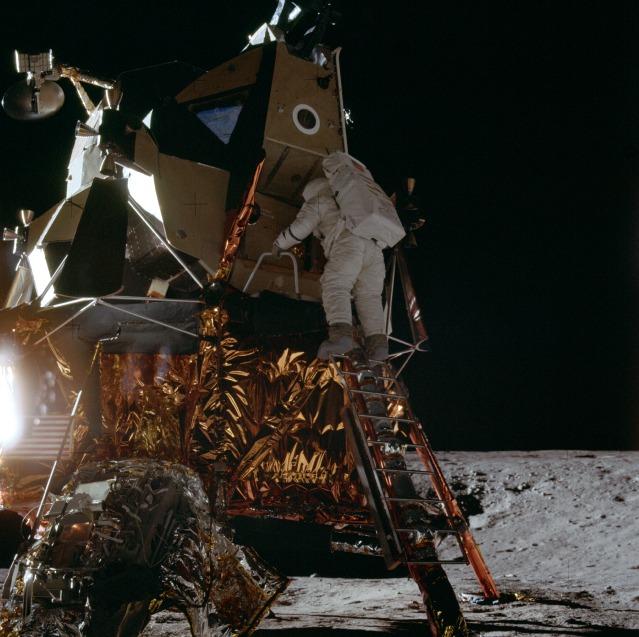
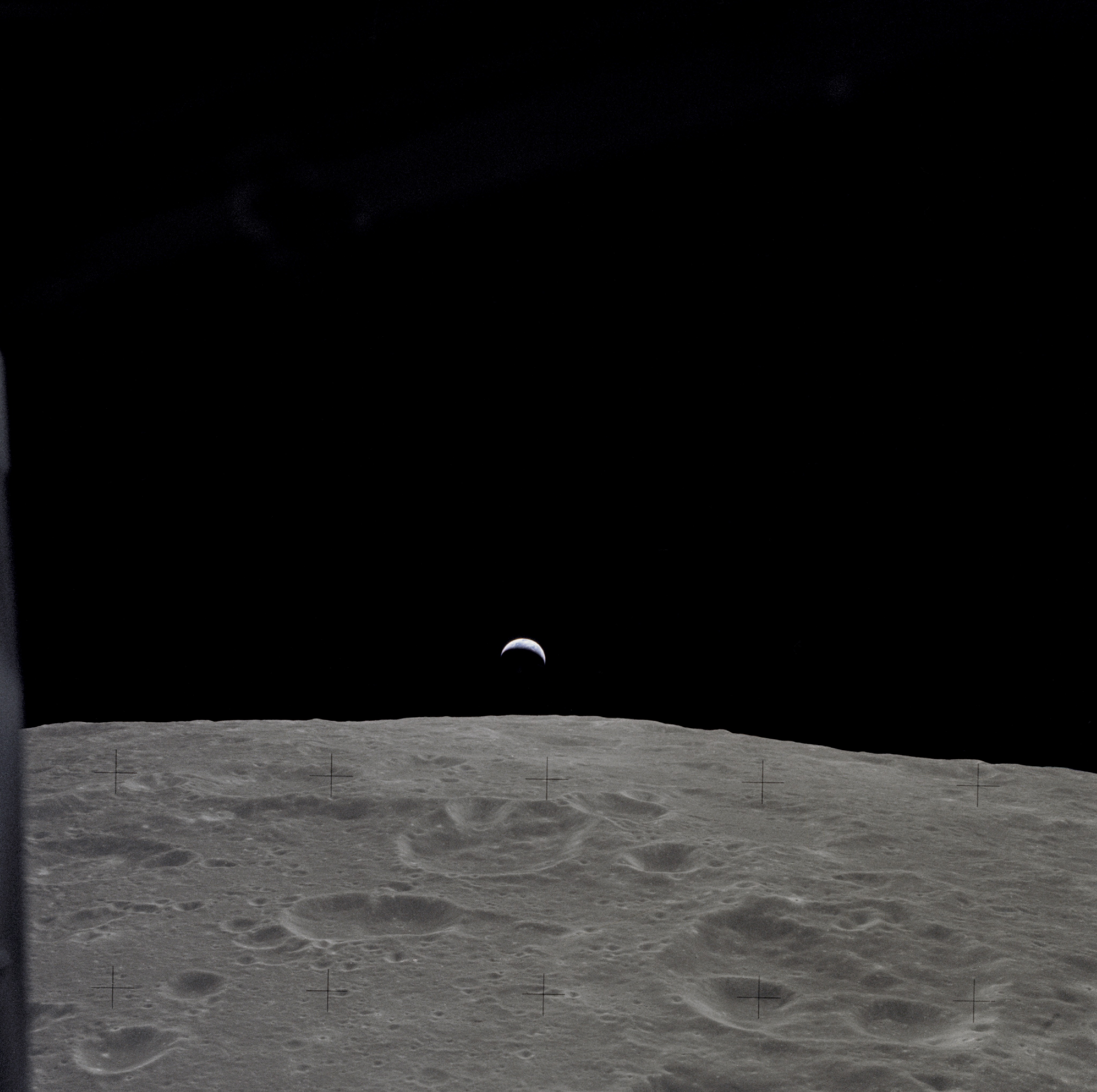
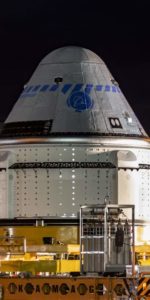
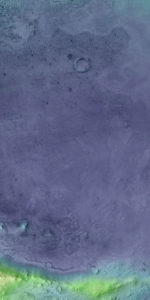
Second photo from the top, Conrad is on the LEFT.
With the benefit of a 50-year perspective, the Apollo moon missions a wonderous time in human exploration. The images become more profound as the years pass. To think that humans walked on another heavenly body and lived to tell about it. Incredible !
Wonderful post! We are currently linking to this great article on our website.
Keep up the great writing.
King regards,
Boswell Duke